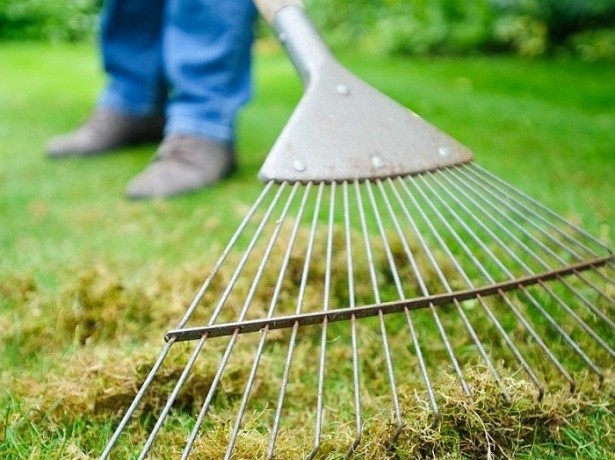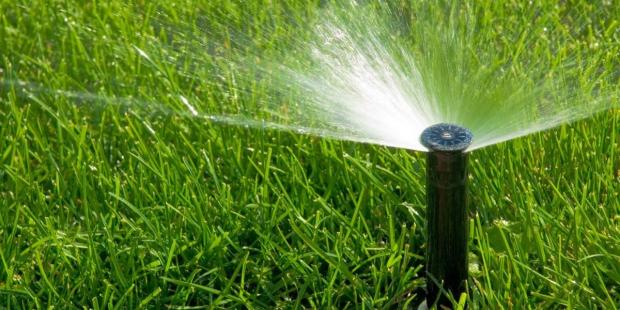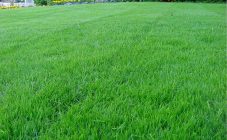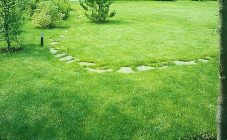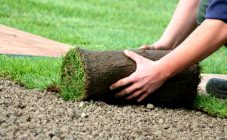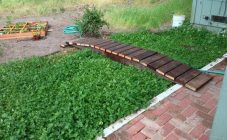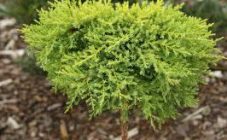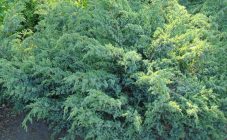Content:
Artificial turf is increasingly used in the arrangement of football fields. This is due to the fact that they not only have an attractive appearance, but also have a number of advantages.
Description and benefits of the lawn
Football artificial turf is produced using fibers that mimic natural grass. These fibers are woven into an elastic base.
The popularity of this type of lawn is due to the extensive list of inherent advantages. Among the most significant are the following:
- has the appearance of natural grass, does not have artificial shine, combines 2 colors;
- has a long service life;
- not trampled or knocked out;
- has a high rate of frost resistance and can be operated in any weather conditions throughout the year;
- possesses wear resistance;
- has resistance to sunlight;
- does not need watering and haircut;
- has a high level of elasticity;
- Provides excellent grip on the players' feet and guarantees a natural ball bounce;
- the presence of polyethylene thread minimizes injury to players;
- economical to manufacture and use.
A properly executed installation process will not only give the football artificial turf an attractive and natural appearance, but also make it easy to maintain.
Characteristics and device
Synthetic turf is produced in rolls (width 4 m, length corresponds to the length of the field). Artificial turf for football can be between 40 and 60 mm in height.
Synthetic turf consists of 2 layers:
- quartz sand;
- rubber granulate.
To improve the durability of artificial turf for the football field manufacturers use Dtex-a fibers, which have a high level of resistance to mechanical stress.
Installation feature
Laying artificial grass with your own hands makes it even more profitable to purchase. For this, you do not need to have special skills and have any special equipment.
The laying process is carried out using the following technology:
- Tidy up the area where the synthetic football grass will be laid: remove debris, stones, glass, the remains of trees and weeds. If laying is planned to be done on an earthen base, it must be well tamped. Tamping can be done by using a garden roller.
- If the installation is to be carried out on a concrete surface, a substrate must be used that will reduce the level of friction against the concrete.
- Before starting the installation, the rolls must be rolled out and given time (at least 12 hours) for them to level.
- The rolls are installed in a straight line. Each strip is overlapped with respect to the other (1.5 cm).
- The rolls are connected with staples. You can use a construction stapler for this.
- The field is fixed along the perimeter with special skirting boards.
- The edges of the territory are bordered by decorative borders.
- The gaps between the blades of grass are covered with granulate and sand.In this case, the field is first covered with sand, which is carefully leveled. This will help the particles to penetrate as deeply as possible between the blades of grass. Only then is a layer of granulate poured.
Following this sequence of installation of artificial turf, it will serve for a long time.
Operation and care
An artificial turf for a football field requires some personal care. These are simple and affordable procedures that will help maintain the area in proper shape:
- The area should be washed as necessary to remove contamination. For this, use conventional detergents.
- Sand and granulate layers need updating. It is recommended to do this once every six months.
- In dry weather, the surface of the field requires light moisture. Thanks to this, it will be possible to maintain the adhesion indicator with the base at the proper level.
- Every week, small punctures are required in the strips, which will help to avoid the development of the rotting process underneath as a result of the accumulation of condensation.
These simple procedures should not be neglected. Otherwise, the field will quickly lose its original appearance and become unusable.
Varieties of lawns for a football field
Modern manufacturers offer consumers several types of coatings that differ in installation technology. The following types can be distinguished:
- Unsolicited. Differs in beautiful appearance and aesthetics. Virtually indistinguishable from natural grass turf.
- Semi-filled. Installation is carried out using a layer of quartz sand and granulate.
- Backfill. Differs in a high rate of elasticity and strength.
By the type of fiber used when creating a covering, lawns can be divided into the following varieties:
- Monofilament. Fibers of this type have the form of an unsplit integral structure. They are distinguished by their strength and long-term use.
- Fibrillated. The fiber structure is branched and dense. Has the ability to hold sand and granulate between the pile. It is mainly used on open-type sports football fields.
- Combined. They combine the characteristics of monofilament and fibrillated types of fibers that are used in the manufacture of lawns. They have a striking resemblance to natural grass fields. Installing a turf with this type of fiber will ensure a long life for the football field.
When choosing a synthetic field for football, it is recommended to take into account the type of fibers that were used to create it; the peculiarity of its installation; the load that the coating can withstand. This will help you to get the most optimal type of synthetic turf, which will have a long life and fully comply with the requirements.

